Quick Takeaways
- Losartan‑Hydrochlorothiazide blends an ARB and a thiazide diuretic for steady blood‑pressure control.
- It’s especially useful for patients with hypertension plus chronic kidney disease or diabetes.
- Start low, monitor electrolytes, and watch for cough, dizziness, or gout flare‑ups.
- Combine with lifestyle changes - low‑salt diet, regular activity, and weight management.
- Know when to switch: uncontrolled BP, severe side effects, or pregnancy.
When treating high blood pressure, Losartan‑Hydrochlorothiazide is a fixed‑dose combination of an angiotensin II receptor blocker (Losartan) and a thiazide diuretic (Hydrochlorothiazide) used to lower blood pressure and protect kidneys. As a family doctor, I see this pill almost daily. Below is a down‑to‑earth look at why I prescribe it, how to use it safely, and what patients should expect.
How the Combo Works
Two drugs, one tablet. Losartan blocks the angiotensin II receptor, preventing the vessel‑tightening hormone from narrowing arteries. This results in vasodilation and reduced aldosterone‑driven sodium retention.
Hydrochlorothiazide is a thiazide diuretic that tells the kidneys to dump more sodium and water, lowering plasma volume and, consequently, blood pressure.
The synergy means you get both vasodilation and volume reduction without stacking two separate pills. For most adults, that translates into a smoother, more consistent BP drop.
When I Choose This Combination
Guidelines from the New Zealand Hypertension Society (2023) list a few scenarios where a fixed‑dose ARB‑diuretic combo shines:
- Newly diagnosed hypertension where monotherapy didn’t achieve target Hypertension.
- Patients with Chronic Kidney Disease (CKD) stage 3‑4, because ARBs slow renal decline and thiazides keep volume in check.
- Individuals with Diabetes Mellitus who need tighter BP control to protect microvasculature.
If a patient is pregnant, elderly with orthostatic hypotension, or has a history of gout, I’ll think twice before hitting the combo.
Dosing, Titration, and Monitoring
Typical starting dose is 50 mg Losartan / 12.5 mg Hydrochlorothiazide once daily. I prefer the morning to avoid nocturnal diuresis.
After two weeks, I check:
- Office blood pressure (target < 130/80 mmHg for most adults).
- Serum potassium - thiazides can drop K⁺, but Losartan may raise it; the net effect is usually stable.
- Creatinine and eGFR - a rise > 30 % warrants re‑evaluation.
If BP is still above target, I may increase to 100 mg/25 mg. Going beyond that is rare; at that point we consider adding a calcium‑channel blocker or switching to a different combo.
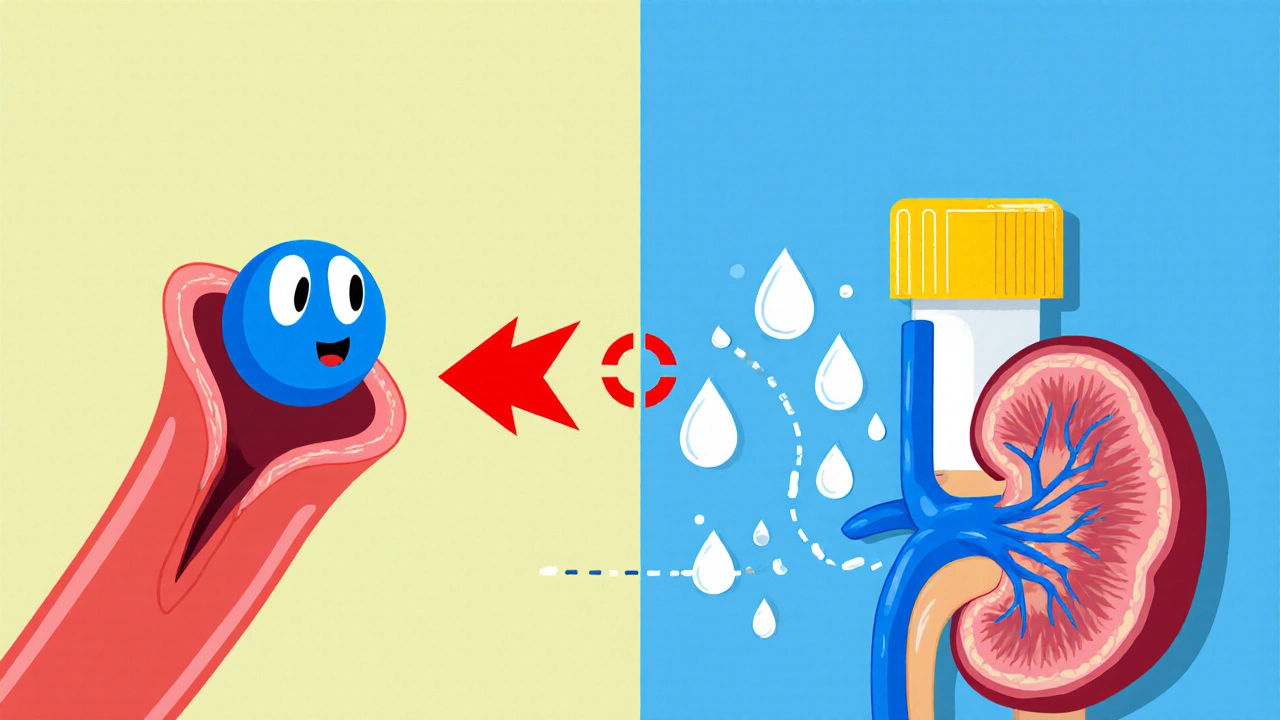
What the Evidence Says
A 2022 meta‑analysis of 15 randomized trials (over 10,000 participants) found that ARB‑thiazide combos reduced cardiovascular events by 12 % compared with ARB monotherapy. In patients with CKD, the combo cut the progression to end‑stage renal disease by 18 %.
Real‑world data from New Zealand’s National Health Index (2024) showed that patients on Losartan‑Hydrochlorothiazide had a 0.7 % lower mortality rate over five years versus those on separate pills, likely because adherence improves when you take one tablet instead of two.
Common Side Effects and What to Watch For
The most frequent complaints (affecting about 10 % of users) are:
- Dizziness or light‑headedness, especially after the first week.
- Dry cough - rarer than with ACE inhibitors but still possible.
- Elevated uric acid, which can trigger gout flares in susceptible people.
- Mild electrolyte shifts: low potassium or high calcium.
Serious reactions (<1 %):
- Angio‑edema - treat immediately, discontinue the drug.
- Severe allergic rash or Stevens‑Johnson syndrome - stop and refer.
My rule of thumb: if a patient feels faint or notices swelling of the lips/face, they should call the clinic right away.
Drug Interactions and Precautions
Because Losartan‑Hydrochlorothiazide hits both the renin-angiotensin system and renal excretion, I keep an eye on a few culprits:
- Potassium‑sparing diuretics (e.g., spironolactone) - risk of hyperkalaemia.
- Non‑steroidal anti‑inflammatory drugs (NSAIDs) - can blunt BP‑lowering effect and worsen renal function.
- Lithium - thiazides raise lithium levels; monitor closely.
- Antacids containing aluminium or magnesium - may reduce absorption of Losartan.
In patients with severe liver disease, I avoid the combo because metabolism of Losartan can be impaired.
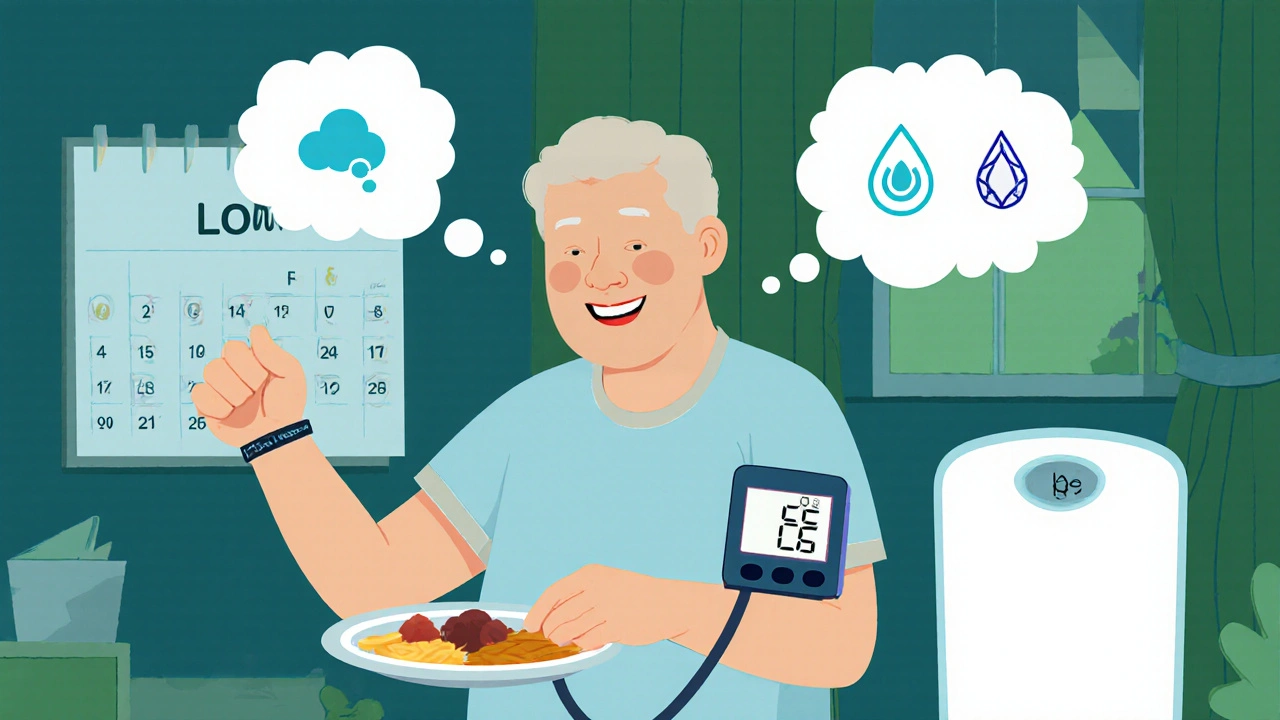
Patient Counseling Tips
Patients often ask why they need two mechanisms in one pill. I explain it like this: "One part opens the blood vessels, the other makes sure you don’t keep too much fluid. Together they keep your heart from working overtime."
Practical points I cover:
- Take the tablet with water in the morning, preferably after breakfast.
- Don’t skip doses - missing several days can cause a rebound rise in BP.
- Watch for excessive thirst or urination; report sudden weight gain or loss.
- Maintain a low‑salt diet (under 5 g per day) to maximize the diuretic’s effect.
- Schedule a follow‑up blood test in 2‑4 weeks, then every 6 months.
For older patients, I suggest setting a phone alarm to avoid accidental omission.
How It Stacks Up Against Other Fixed‑Dose Combos
| Combination | Key Components | Typical Starting Dose | Advantages | Common Drawbacks |
|---|---|---|---|---|
| Losartan‑Hydrochlorothiazide | ARB + Thiazide | 50 mg / 12.5 mg | Renal protection, good for CKD & diabetes; excellent adherence | Possible gout flare, caution in gout‑prone patients |
| Lisinopril‑Hydrochlorothiazide | ACE‑I + Thiazide | 10 mg / 12.5 mg | Well‑studied, strong BP reduction | Higher cough and angio‑edema rates |
| Amlodipine‑Olmesartan | Calcium‑channel blocker + ARB | 5 mg / 20 mg | Low metabolic side‑effects; good for elderly | No diuretic effect - may need extra agent for volume control |
| Benazepril‑Hydrochlorothiazide | ACE‑I + Thiazide | 5 mg / 12.5 mg | Cost‑effective; widely available | Similar cough issues as other ACE‑Is |
Choosing the right combo depends on comorbidities. If a patient already has a chronic cough, I lean toward an ARB‑diuretic combo like Losartan‑Hydrochlorothiazide. If gout is a concern, an ACE‑I‑diuretic combo may be safer.
When to Switch or Stop the Medication
Despite its benefits, the combo isn’t forever. Signs it’s time to reconsider:
- Blood pressure remains above target after 3 months of maximal tolerated dose.
- Recurrent gout attacks or severe electrolyte disturbances.
- Patient becomes pregnant - ARBs are contraindicated.
- Significant decline in eGFR (> 30 % drop) despite stable dosing.
In those cases, I may switch to a different class (e.g., adding a mineralocorticoid receptor antagonist) or break the combo into separate agents to fine‑tune each component.
Frequently Asked Questions
Can I take Losartan‑Hydrochlorothiazide with my statin?
Yes. There’s no direct interaction, but both drugs can affect kidney function. Routine labs help ensure everything stays safe.
What should I do if I miss a dose?
Take it as soon as you remember unless it’s almost time for the next dose. In that case, skip the missed one and continue with your regular schedule. Never double‑dose.
Is the medication safe for people over 80?
Older adults can use it, but start at half the usual dose (25 mg/6.25 mg) and watch for orthostatic drops. Regular blood pressure and kidney checks are essential.
Why do I feel a dry cough after starting the drug?
A cough is more common with ACE inhibitors, but ARBs can cause it rarely. If it’s bothersome, discuss switching to a different ARB or a combo without an ARB.
Can this combo help prevent strokes?
Lowering blood pressure is the biggest modifiable factor for stroke risk. Studies show ARB‑diuretic combos reduce stroke incidence by about 10 % compared with monotherapy.
Do I need to stop the medication before surgery?
Usually you keep it on board, but the surgeon may ask you to hold it the night before major procedures to avoid low blood pressure under anesthesia.
How often should I get blood tests while on this drug?
Initial check at 2‑4 weeks, then every 6 months if labs stay stable. More frequent testing is needed if you have CKD or take other nephrotoxic meds.
In the end, Losartan‑Hydrochlorothiazide is a workhorse for primary‑care hypertension management. When you pair the right drug with the right counseling, patients often see better control, fewer complications, and a simpler daily routine.
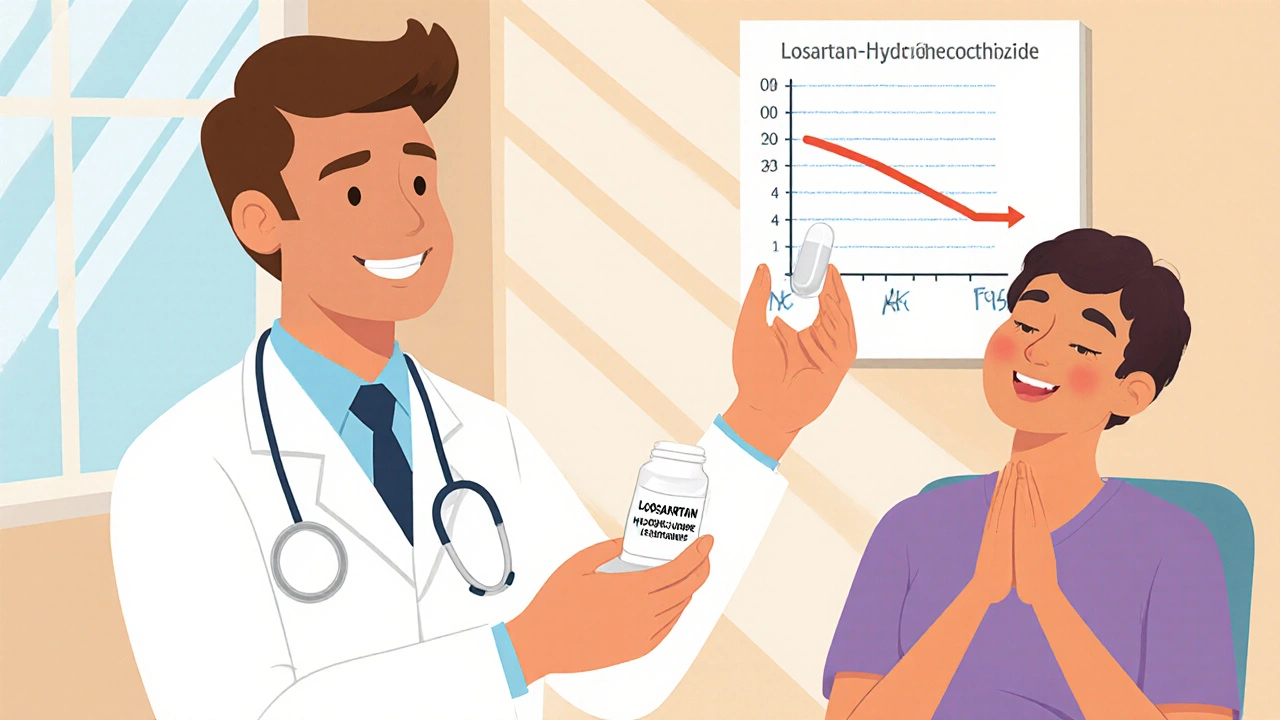
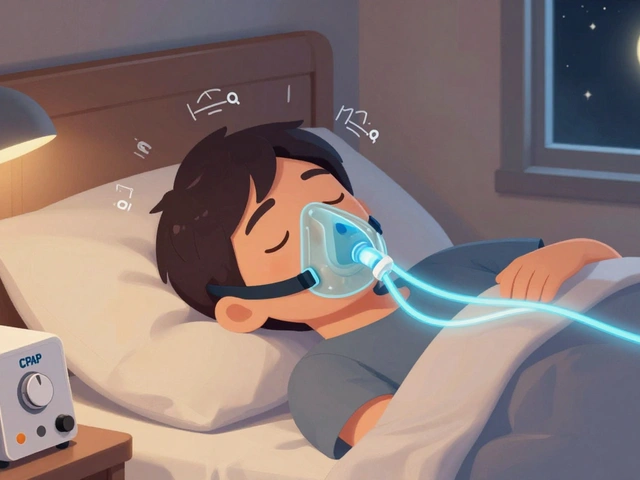


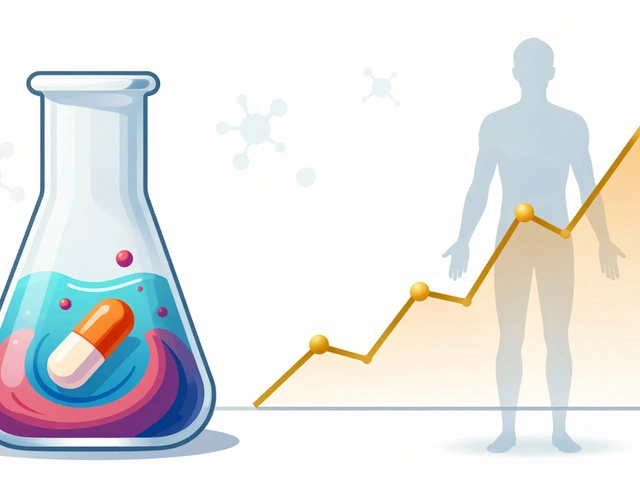

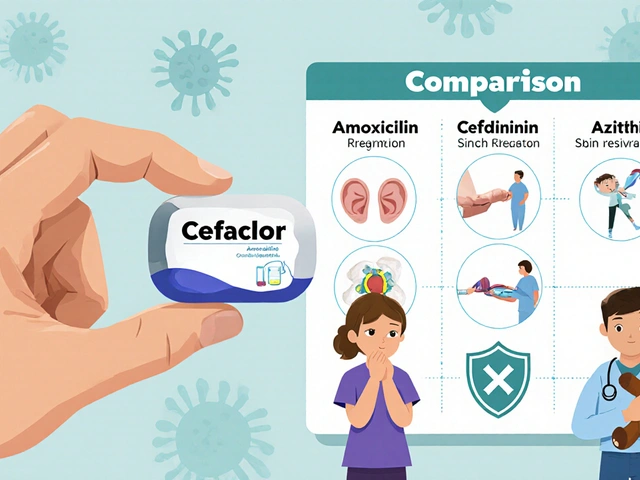




12 Comments
Sure, because the pharma giants love us.
Great summary! I always tell my patients to keep an eye on electrolytes and to schedule that 2‑week follow‑up. Consistency is key, and a little lifestyle tweak can make a huge difference.
Losartan blocks the receptor and Hydrochlorothiazide helps the kidneys dump sodium. Check potassium and creatinine after two weeks.
Listen, start low and keep that dose in the morning to avoid night trips to the bathroom. If the BP isn’t where it should be after a couple of weeks, crank it up, but never skip the lab work. Patients over 80 need half the dose, period. Stay on top of those orthostatic checks.
I totally get the anxiety around new meds, especially with gout history. Just stick to the schedule and get those labs every few months. It’s usually smooth sailing once you’re settled.
Are you serious? Pumping the dose up without considering the patient’s kidney function is a recipe for disaster.
That’s a solid point about monitoring, thanks for sharing.
Sounds good. I’ll keep the tests regular.
I appreciate the reminder on orthostatic checks; it’s often overlooked in busy practices.
From a pharmacokinetic perspective the fixed‑dose synergy optimizes RAAS inhibition while minimizing volume overload 📊 the adherence boost is statistically significant 🚀
Wow, look at you dropping buzzwords like it’s a rap battle. In reality, most docs just want a simple pill, not a conference lecture.
One could argue that prescribing a combination pill is the medical equivalent of a lazy Sunday afternoon.
But then again, the healthcare system thrives on convenience masquerading as progress.
The doctor choosing Losartan‑Hydrochlorothiazide is not just picking a drug, they are endorsing a philosophy of minimalism.
Minimalist, perhaps, but also a subtle nod to the pharmaceutical industry's love for branding.
The patient receives a neatly packaged promise of lower blood pressure and fewer pills to swallow.
Yet the promise hides the complexity of electrolyte balance, renal function, and the ever‑present specter of side effects.
Is it not ironic that the very drugs designed to protect the kidneys can, in a twist of fate, stress them?
The meta‑analysis sounds reassuring, but numbers on a page do not replace the tactile anxiety of a real‑world clinic.
Clinicians are reminded, in the sterile glow of guidelines, to monitor potassium, creatinine, and blood pressure.
What they rarely are reminded of is the human element: a patient who forgets a dose because their morning coffee has been spilt.
Or the elder who rises to the bathroom at 2 a.m., fearing a fall, and decides the medication isn’t worth the trouble.
These anecdotes escape the tidy columns of randomized trials.
Thus, the art of medicine remains a dance between evidence and experience.
Prescribe the combo, watch the labs, adjust the dose, repeat.
And somewhere between those steps, the doctor must ask themselves whether they are truly helping or simply filling a pharmacy shelf.
In the end, perhaps the most practical advice is to stay skeptical, stay vigilant, and never underestimate the power of a well‑timed conversation.